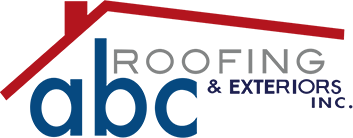Should I file for hail damage?
When it comes to filing hail damage claims to insurance companies, we do not make such recommendations lightly or blindly in the hopes that something will stick. Rather, we take several different factors into consideration:
- Do the shingles and roof-metal display evidence of hail impacts?
- How obvious are the hail impacts?
- Have other hail-claims been approved on the same street, block, or neighborhood recently?
- Based on the amount of visible evidence of hail damage, how often have we seen roofs with similar levels of damage get approved for replacement by insurance companies over past months & years?
- At what level of evidence & corroboration have the insurance companies currently “set the bar” for replacement approval?
Regarding #5: Insurance adjusters’ inspections can be extremely subjective. Additionally, insurance companies will occasionally raise or lower the bar that describes the amount of damage there needs to be for a claim to be approved. This raising or lowering of the bar is not general knowledge. It is all done “under the radar” for P.R. reasons and/or financial reasons. However, I have inside knowledge of this. Before I decided to start my own roofing business, I was fully approved to become a State Farm agent and sold insurance for several months. I also held a certified public adjuster license for a while.
Roofers are not told when the bar is raised or lowered. We determine how high or low that bar is set based on what we see get either approved or denied. Sometimes we are shocked to see roofs that have no visible hail-damage get approved for full replacement. At other times blatantly obvious hail-damage claims are summarily denied. In other words, just because an insurance adjuster denies that there is hail damage, does not mean they’re right.
What if my insurance denies my claim?
“But Greg…”, you might say, “…I filed a hail-damage claim with my home-owners insurance, and they denied the claim!” In that case, there is hope; if the shingle manufacturer subsequently denies your shingle-warranty claim on the grounds that an alleged defect was caused by hail and not by manufacturing-defect, you will now have the expert documentation that you need, to prove to your insurance company that your roof was impacted by hail. “Hey Mr. Insurance Adjuster… do you remember that hail-damage claim I filed, that you denied….?”
The good news is that the claims filed are not filed in vain. You are still better-off having filed the claims than not.
Regarding hail-damage to asphalt shingles, as it relates to shingle manufactures’ shingle warranties: If there are ever any problems with the roof shingles that can in any way be attributed to, or be exacerbated by, hail impacts, and the hail impacts are evident when the manufacturer examines the shingles, the shingle manufacturer would deny any sort of warranty claim, and would state that the alleged defect is due to hail-impacts and not due to a manufacturing defect. Unless you have a shingle that has a special hail-impact resistance warranty, such as the LANDMARK IR which is made by Certainteed, or the TIMBERLINE AS II made by GAF.
Our main concern with the hail damage is the potential for premature and rapid loss of the surface granules, which would result in accelerated weathering & aging of the asphalt. In turn, that would lead to premature failure of the shingles.
Here is the silver lining: because home-owners (the more the better) filed hail-damage claims with their insurance, they (and you) now have written documentation, and so do the insurance companies, that their roofs were impacted by hail. So, if the manufacturer ever denies a future shingle-warranty claim on the grounds that the defect was caused by hail and not by manufacturing, the homeowners that filed claims will have the documentation they need to possibly go back to their insurance companies and recoup the cost of roof replacement.
One further note:
Because hail-damage can be latent and may not become fully manifest until several years have passed, it is our recommendation that you have a few of the roofs re-inspected for latent hail-damage two years from now, and then again five years from now. We will be happy to do those inspections for free when the time comes. At those times we will also do a quick scan for any potential workmanship issues that may have become apparent between now and then. It is important that the first inspection is done before three years have passed since the hail-storm occurred, in order to stay within the three-year statute of limitations for filing an insurance claim in the state of North Carolina should the existing hail damage become dramatically more evident by then due to weathering.
-Greg Flury
Owner of ABC Roofing Inc.

